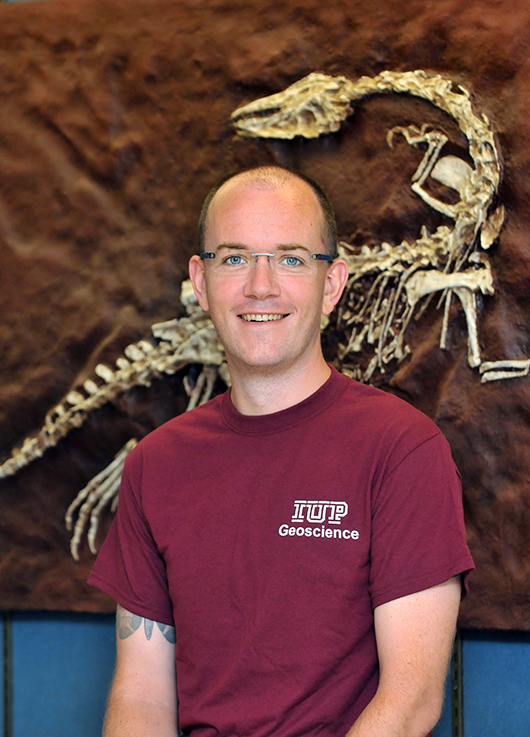A team of scientists, including Indiana University of Pennsylvania's Jonathan Warnock, a paleoclimatologist in the Department of Geoscience, believe they are coming closer to solving the 100-year-old mystery about a dinosaur graveyard in Cleveland, Utah.
 For the past six years, Warnock has done research at the Cleveland-Lloyd dinosaur quarry in conjunction with colleague Joseph Peterson from the University of Wisconsin Oshkosh. This year, Warnock was accompanied by 18 IUP students for three weeks of field study at the quarry. This is the second year for IUP students to work with Warnock at the site.
For the past six years, Warnock has done research at the Cleveland-Lloyd dinosaur quarry in conjunction with colleague Joseph Peterson from the University of Wisconsin Oshkosh. This year, Warnock was accompanied by 18 IUP students for three weeks of field study at the quarry. This is the second year for IUP students to work with Warnock at the site.
The site was first discovered in the 1920s. Scientists consider the area as having one of the densest concentrations of bones ever found, but do not completely understand why or how this group of carnivorous dinosaurs came together.
Scientists have also found that the number of carnivorous dinosaurs are three times the amount of plant-eating dinosaurs found there, based on bones already excavated. The fossil bed also has an unusually large proportion of Allosaurus fossils. Allosaurus is a 28-foot-long predatory dinosaur that lived in North America 155 to 150 million years ago.
Warnock and Peterson's co-authored article for the journal “PeerJ,” describes how the team of researchers, by looked at the minerals in the sediments, came to a consensus that flooding, over several different periods, was responsible for accumulating the bodies at the quarry.
The researchers suggest that the rotting dinosaur bodies would have polluted the area for other animals (fish or crocodiles), and the dinosaur carcasses would not be palatable for other dinosaurs, which explains the lack of other fossils and the absence of bite marks on the dinosaur bones.
“There is still much more research to be done, including understanding why there are so many Allosaurus fossils at the site,” Warnock said. “One explanation is that the Allosaurus fossils at the site reflect the population of Allosaurus at the time–we're leaning toward that explanation, but we can't really understand what is going on in the ecosystem or in Jurassic life until we understand the quarry.”
Warnock's work has drawn the interest of international publications, including Newsweek ("Mystery of Cleveland Dinosaur Graveyard Finally Solved by Scientists"), The Daily Mail ("Mystery of the world's densest dinosaur graveyard is finally solved: Thousands of Allosaurus bones ended up in a US pit because they were washed there by FLOODS"), and Scientific American ("The Making of an Allosaurus Graveyard").
While doing work at the quarry, Warnock and the IUP students were interviewed for a five-part video series being produced by the Bureau of Land Management, which manages the site.